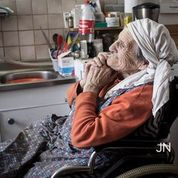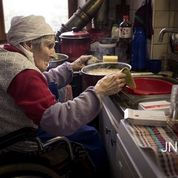Never Photograph Something That You Don't Care About*
- Jorg Neumerkel
- Jun 2, 2021
- 3 min read
Updated: Jun 3, 2021
by Jorg Neumerkel
How do I explain what moves me to take photos and, above all, how can I describe it in the CATT blog with my insufficient knowledge of English? (With Google Translate there is at least no problem with my level of English).
So let's start with my first encounter with a camera. As a child, I occasionally picked up my
parents' camera, a Penti in which a film with 36 exposures would be enough for a year, and tried to photograph the relatives at various family celebrations. When I was 14 I got my first camera. That was an Exa 1b with a 50mm lens. That was the standard in East Germany at the beginning of the 1980s. Since it was cheaper, I photographed black and white and developed the films myself. Immediately I enlarged it on photo paper.
From today's perspective, the motifs were rather boring, which then changed during my studies in Berlin. Suddenly there were a lot of interesting things that I wanted to capture in the picture. Back then, these were mainly pictures from the streets of Berlin, portraits of my college friends or pictures from trips or from studying abroad in Hungary.
Of course, a lot of the pictures didn't work out during this time or I didn't have a camera with me, for example when the Berlin Wall fell on November 9th, 1989, and I went to West Berlin for the first time over the Bornholmer Bridge, without a camera, what a shame!
City of Halle-Neustadt in Germany:





I didn't become a professional photographer, so I don't have to make a living from photography. Over time, however, my own style has developed. At least that's how I feel. I see my pictures more as something documentary, less as art. I never had any artistic training. I like to look at the work of the early Magnum photographers or work by Ansel Adams, Sebastiao Salgado, or Steve McCurry. There you can learn a lot about light and mood.
My feelings play a decisive role when taking photos. I like to wait for the right moment, especially for portraits, sometimes as a silent observer, sometimes as an active listener. I like people, or rather I find them interesting. If I want to portray a person, I have to know a little about what moves them, how they are, and what they do. There is no good portrait without empathy. This is sometimes a bit more difficult on our travels because I don't speak the language. But if you are interested in people and things in front of the camera, this is the door opener.
Portraits from a Rajasthan-Trip India:









With street photography, it usually has to happen very quickly to catch the right moment. I'm not thinking too much about that. Occasionally, however, I also observe how a situation is developing and wait for the right moment. This is exactly what the French like Henry Cartier-Bresson or Robert Doisneau were particularly good at.
Vienna, Pigeon market Naumburg-Germany, Pictures from some exhibitions, Romanian Violinist, Scene in Karosta-Latvia):








To photograph a landscape you need time or you are lucky enough to be in the right place with the right light and weather. Unfortunately, too often I don't have the time, but sometimes I'm lucky and everything works out.
Landscapes (Iceland, Baltic Sea, German Erzgebirge, Romanian Mountains):





I like series. You can tell a little story or show how something is developing. As an amateur, you should devote yourself to a topic that you can work on for a while or take up again and again. You don't get regular assignments. This is how you stay on the ball.
Frieda (South-Tirol Italia):








It is said that the best camera is the one you have with you these days, the cell phone. That's true to a certain extent. For my favorite hobby, I myself need a camera that I like and that also likes me, because we are waiting together for the next subject.
Jörg Neumerkel
Altenburg - Germany

*Title is a quote by Lisette Model (1901-1983), American photographer
Jorg Neumerkel is a German photographer living and working in Altenburg, Thuringia.
You can see his full bio here.


Comentarios